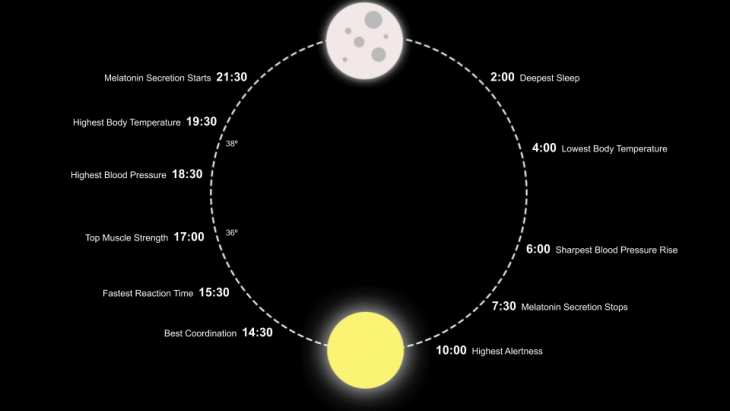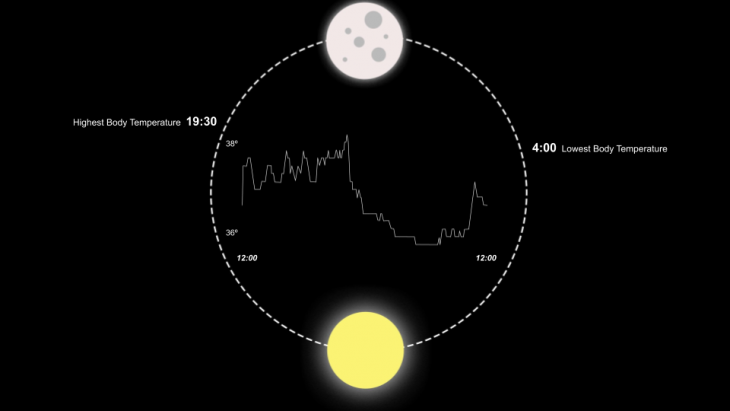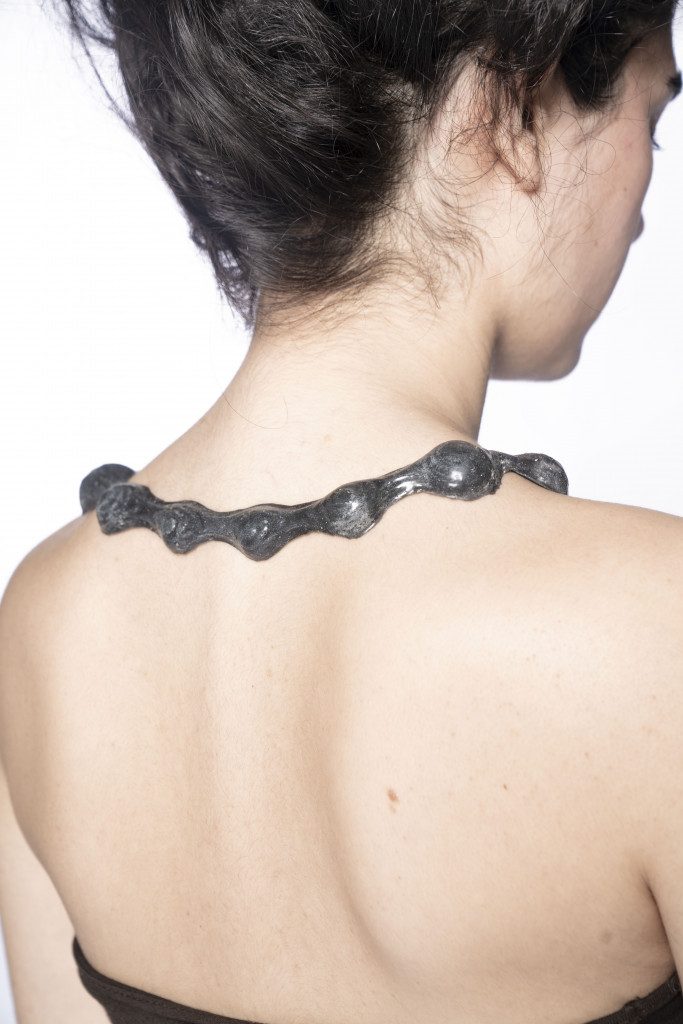KAIROS
Time is a measurement, a concept to sequence events, and synchronized worldwide. Time is a personal experience for each human, however humans all use the same clock to sequence our day. The project Kairos aims to sense the time of the body, also known as the circadian rhythm. There are several methods for measuring the circadian rhythm of an individual, eg. body temperature, blood pressure, or melatonin secretion. The Kairos device developed in this project uses body temperature to make an estimation of the current stage of an individual’s circadian cycle. It measures the body temperature every three seconds, analyzes the circadian rhythm of the individual, then gives feedback to the user by heat pads located on the shoulder and back of the body. It is a clock synchronized to the person’s circadian cycle instead of the traditional definition of time.
CIRCADIAN RHYTHM
A circadian rhythm is a natural, internal process that regulates the sleep-wake cycle and repeats roughly every 24 hours. It can refer to any biological process that displays an endogenous, entrainable oscillation of about 24 hours.

The circadian rhythm can be understood by measuring many different things in the body such as blood pressure, hormonal secretions, body temperature, etc. In this project, body temperature is used to make this understanding of circadian rhythm.

Our bodies are connected to the cycle of the earth’s rotation which is roughly 24-hours. However, our body cycle can get disrupted by many natural and unnatural factors. We usually plan our day using synchronized time, but not every individual’s body is perfectly aligned with this clock. Therefore it could be argued that most of us are living by the wrong clock. What would change in our daily habits if we were constantly aware of what time it is for our bodies? Some studies also suggest that the circadian rhythm is linked to the general health of the body, therefore sensing circadian rhythm could be a way for an individual to monitor their own health.
DESIGN
The third iteration of the project was mostly concerned about finalizing the garment by reducing the size and complexity as much as possible. The main problem with the second iteration was the number of pins and wires needed to control all of the heat pads. The circuit system changed completely by implementing WS2811 chips in the heat pads, thus reducing the number of pins and wires needed. This chip is commonly used in individually addressable LEDs. By using this chip, the number of pins/wires needed for the device went from twelve to three (voltage, ground, and data).
A wearable necklace with twelve silicon-graphene pads was designed with the help of parametric design software such as Rhino, Grasshopper, and 3d body scanning. The location and size of the silicon-graphene pads and the shape of the piece comes from a data-informed design process to make the piece as small as possible and which fits well on the body.
The housing for the wireless microcontroller and temperature sensor is designed as a separate piece from the wearable. This allows one to wear the microcontroller all day to continuously measure and log the body temperature. This housing adheres to the chest with magnets. Consequently, four 3mm magnets or magnetic metals should be subdermally implanted to the chest or adhered with skin adhesive. When the two pieces are connected together, they complete a circuit with 3mm magnets and operation begins in accordance with the measured temperature data.

